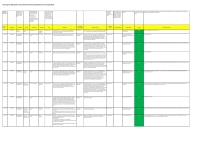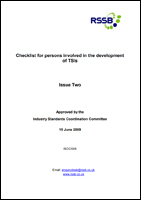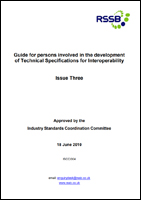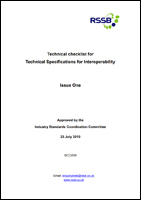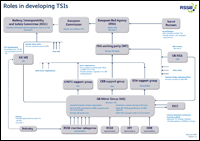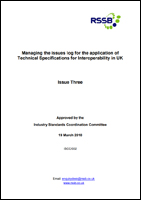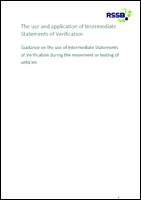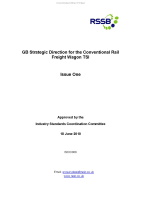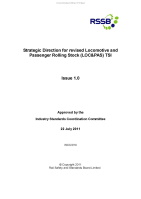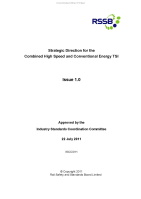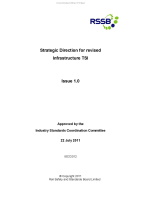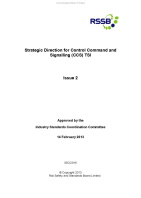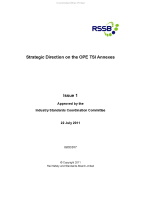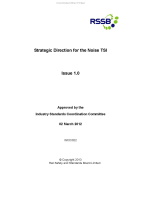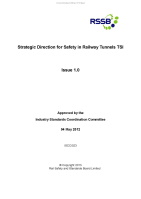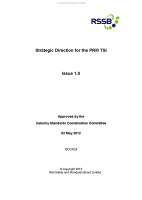Technical Specifications for Interoperability
Following the UK’s exit from the EU and the end of the transition period on 31 December 2020, EU Technical Specifications for Interoperability (TSIs) have ceased to apply in the UK. The technical content of TSIs at the end of the transition period are replicated as National Technical Specification Notices (NTSNs), which apply from 1 January 2021. These are published by the Secretary of State on the Department for Transport (DfT) website. Track-changed versions of the NTSNs are published on this website for guidance purposes only. They show how the NTSNs differ from the corresponding TSIs (see National Technical Specification Notices).
TSIs define the technical and operational standards which must be met to satisfy the ‘essential requirements’ and to ensure the interoperability of the railway system in the European Union. The essential requirements are safety, reliability and availability, health, environmental protection, technical compatibility and accessibility. ‘Interoperability’ is ‘the ability of the rail system to allow the safe and uninterrupted movement of trains which accomplish the required levels of performance’.
You can find TSIs on the EUR-Lex website.
Who must comply with TSIs?
TSIs are mandated on all mainline railways across the European Union. From 1 January 2021, they no longer apply in GB. The technical content of TSIs were replicated in NTSNs at the end of the transition period on 31 December 2020. See National Technical Specification Notices.
How do TSIs relate to national technical rules?
National technical rules (NTRs) are used to:
- Fill identified 'open points' in TSIs (‘open points’ are identified in an annex to a TSI if certain technical aspects corresponding to the essential requirements cannot be explicitly covered in the TSI)
- Support ‘UK specific cases’ in TSIs (‘UK specific case’ is a special provision relating to the technical specifications for a subsystem or an interoperability constituent, which enables it to be compatible with the rail system as set out in a TSI)
- Support a derogation from a TSI
- Set out requirements to maintain technical compatibility between existing assets or processes that do not conform to the requirements of TSIs and new, upgraded or renewed assets conforming to TSIs.

